Crystal
Forum Replies Created
-
CrystalParticipantI like the idea of adding stewardship to engagement with children.in reply to: Time to Reflect #996368
-
CrystalParticipantAs a teacher, I'm a big proponent of free play. Taking kids into natural areas designed for kids, like Prospect Park's natural playground and just letting them explore is incredibly beneficial. I've noticed that when classes first come, they try to play games from the playground, like Banana Tag. As we return multiple times, they start to create their own games and noticing that are involved in nature. For example, they pretend to make food or money out of natural objects or they concentrate on trying to build a structure out of natural materials. I try to be as hands-off as possible and let them find their own activities and adventures.in reply to: Building Enthusiasm for Getting Outside #992238
-
CrystalParticipantUntil I was in 5th grade, I grew up in a rural area. Since my parents, weren't helicopter types, my siblings and I spent a lot of time outside running all over the 2 acres we lived on, as well as climbing over fences to explore areas and fields nearby. One vivid memory I have is of climbing onto the roots of a fallen tree and looking down and seeing dozens of tiny snakes all around my feet! I must have walked onto a snake nest of some sort and I wish I could go back and look more closely at the snakes to ID them. I also remember the bright wings of the Red-winged Blackbirds and the Woodchuck the lived in our compost pile. We had a feral cat that lived outside and occasionally got food scraps and enjoyed being petted. Many of our neighbors had animals, such as cows, pigs, chickens and one couple even bred show pigeons! Whenever I complained of being bored, my parents would say, "Why don't you go outside?" Great advice!in reply to: Remembering Your Moments in Nature #992219
-
CrystalParticipantBefore this course, I didn't realize that hummingbirds were only in the Western Hemisphere, although I did notice the absence of them in Australia and New Zealand. There were some assumptions that I had based on North American hummingbirds that were dispelled, such as believing that all hummingbirds migrated. Additionally, this course helped me to appreciate all the ways that hummingbirds are unique throughout the world.in reply to: Finding and Connecting with Hummingbirds #991292
-
CrystalParticipantI had heard before that hummingbirds used spiderwebs to build nests, but seeing the various photos made it really clear why. So smart to build an expandable and camouflageable nest!in reply to: Life of a Hummingbird #991281
-
CrystalParticipantI was just thinking this as I saw them drinking from the feeder. How different is our sugar water, in nutrients, from what they would get from a more natural source?in reply to: Life of a Hummingbird #991277
-
CrystalParticipantSame! Well said.in reply to: How Hummingbirds Rule the Nectar World #991267
-
CrystalParticipantI live in New York and usually we only have Ruby-throated Hummingbirds, but this year, a Black-chinned Hummingbird showed up on Randall's Island (1st record for the state) and last year, a Calliope Hummingbird showed up on Long Island, NY. I always wonder how vagrants get to where they end up and if it will become part of a larger trend of birds from warmer climes becoming more common.in reply to: What Makes a Hummingbird a Hummingbird #991248
-
CrystalParticipantSometimes I like to draw birds I'd like to see, so that I get to know their points of distinction, especially if they are hard to tell apart at first, like sparrows or terns. It's always a great moment when I draw a bird and then see it because I notice the details so much more clearly.in reply to: Tips to Keep You Going #824193
-
CrystalParticipantI like to read about people who have outdoor adventures, past and present. Two of my favorites are Labyrinth of Ice and Swimming to Antarctica.in reply to: The Power of Reflection #824192
-
CrystalParticipant
 It took me a year and one day to get this course completed. I think my final bird looks kind of worried, but overall has better proportions than the portly one I first drew. I used the idea of looking at negative space to get the body to be more accurate. From taking the course, I also learned to do the background all at once to start, instead of afterward and I had a lot less color bleeding that way. When I did my first painting, I didn't know about letting the layers dry and everything kind of bled together. In the second attempt, I was able to get more details on the stomach stripes and leaves, from layering and using a smaller brush. Overall, I think the second picture reflects more of the actual bird and the first one is more of the idea of the bird. I still need a lot of practice, but I did make progress! Thanks for the wonderful course. in reply to: See How Far You’ve Come #824190
It took me a year and one day to get this course completed. I think my final bird looks kind of worried, but overall has better proportions than the portly one I first drew. I used the idea of looking at negative space to get the body to be more accurate. From taking the course, I also learned to do the background all at once to start, instead of afterward and I had a lot less color bleeding that way. When I did my first painting, I didn't know about letting the layers dry and everything kind of bled together. In the second attempt, I was able to get more details on the stomach stripes and leaves, from layering and using a smaller brush. Overall, I think the second picture reflects more of the actual bird and the first one is more of the idea of the bird. I still need a lot of practice, but I did make progress! Thanks for the wonderful course. in reply to: See How Far You’ve Come #824190 -
CrystalParticipantI love how the watercolor kits are so easy to carry but I once forgot to bring a paper towel for drying/wiping my brush. It made things a lot harder. So now I carry a little pencil box with scratch paper and paper towels to throw in with my personal kit. I find I have the hardest time waiting for the paint to dry and when I don't, sometimes the colors run together, like the yellow in this Seaside Sparrow's face. Also, eyes are hard to get right!
 in reply to: Filling Your Sketches with Color #820581
in reply to: Filling Your Sketches with Color #820581 -
CrystalParticipantI tested out all of these techniques. I can see that the wet on wet would be great for backgrounds, but it's kind of unforgiving. I wonder if it dried, if I could do a wet on dry over it. I am going to need more practice to master the texture of dry on dry with a water brush. In the future, I will try the wet on dry for detail work and dry on wet for large areas of color.in reply to: Getting Comfortable with Watercolor #810397
-
CrystalParticipantI found this to be harder than I expected. I had trouble regulating the amount of water that was going into the paint. I found the beak of the bird color to be the hardest to mix because it isn't a bright yellow, but when I would put in darker colors, it was easy to overpower the yellow and I would start over again. I can see how experience makes this easier!

 in reply to: Capturing Nature’s Color Palettes #810393
in reply to: Capturing Nature’s Color Palettes #810393 -
CrystalParticipantI feel like I still need to work on shading to create depth and contrast. I think putting in more hours would help! I found the squint test to be the most helpful. I'd never really thought about using a technique like that to see the lights and darks when drawing.

 in reply to: Giving Your Drawings Depth #809078
in reply to: Giving Your Drawings Depth #809078 -
CrystalParticipantI found the markings on the belly and feet to be the hardest. I think it turned out better upside down than it would have right side up.
 in reply to: Drawing What You See – Upside Down Drawing #807997
in reply to: Drawing What You See – Upside Down Drawing #807997 -
CrystalParticipantI find it challenging to get the proportions right both horizontally and vertically. It's certainly more easy when it is from a photo or a subject that holds still, like a landscape. I do feel that it helps to use this technique. I saw that Liz used an actual ruler when she drew the plant in the last video and it seems like a helpful tool to try out in the field.in reply to: Getting the Proportions Right #807991
-
CrystalParticipantI noticed the movements of the birds because often it made them easier or harder to draw. For example, the house sparrows would hop from the feeder to the ground (out of view) but the pigeon would slowly strut around. The wing bars on the Goldfinch really popped out to me in away it hadn't before I drew it. I was surprised to see a squirrel show up!
 in reply to: Capturing Behavior – Gesture Drawing #807481
in reply to: Capturing Behavior – Gesture Drawing #807481 -
CrystalParticipantIt seemed that I did better when I started on the top side of my subject. It also helped me to look at the negative space around the subject.
 in reply to: Focusing on Your Subject – Blind Contour Drawing #807445
in reply to: Focusing on Your Subject – Blind Contour Drawing #807445 -
CrystalParticipant
 When I first looked at these two leaves they seemed very similar to me, but after drawing and comparing them, I noticed differences in may things, such as the shape of the points and veins. I also noticed many subtle differences in color. in reply to: The Power of Comparison #804335
When I first looked at these two leaves they seemed very similar to me, but after drawing and comparing them, I noticed differences in may things, such as the shape of the points and veins. I also noticed many subtle differences in color. in reply to: The Power of Comparison #804335
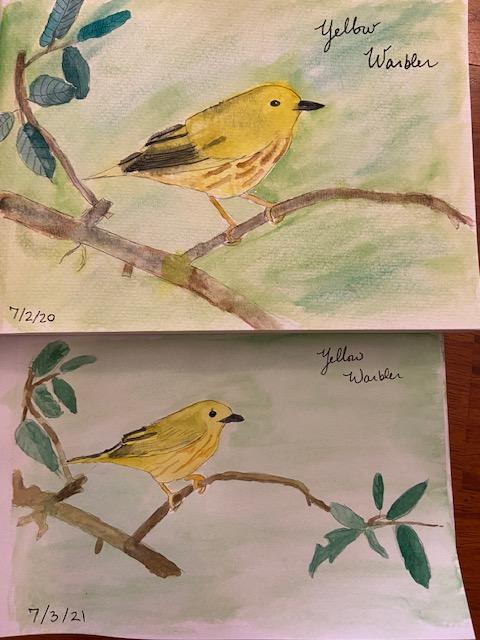 It took me a year and one day to get this course completed. I think my final bird looks kind of worried, but overall has better proportions than the portly one I first drew. I used the idea of looking at negative space to get the body to be more accurate. From taking the course, I also learned to do the background all at once to start, instead of afterward and I had a lot less color bleeding that way. When I did my first painting, I didn't know about letting the layers dry and everything kind of bled together. In the second attempt, I was able to get more details on the stomach stripes and leaves, from layering and using a smaller brush. Overall, I think the second picture reflects more of the actual bird and the first one is more of the idea of the bird. I still need a lot of practice, but I did make progress! Thanks for the wonderful course.
It took me a year and one day to get this course completed. I think my final bird looks kind of worried, but overall has better proportions than the portly one I first drew. I used the idea of looking at negative space to get the body to be more accurate. From taking the course, I also learned to do the background all at once to start, instead of afterward and I had a lot less color bleeding that way. When I did my first painting, I didn't know about letting the layers dry and everything kind of bled together. In the second attempt, I was able to get more details on the stomach stripes and leaves, from layering and using a smaller brush. Overall, I think the second picture reflects more of the actual bird and the first one is more of the idea of the bird. I still need a lot of practice, but I did make progress! Thanks for the wonderful course. 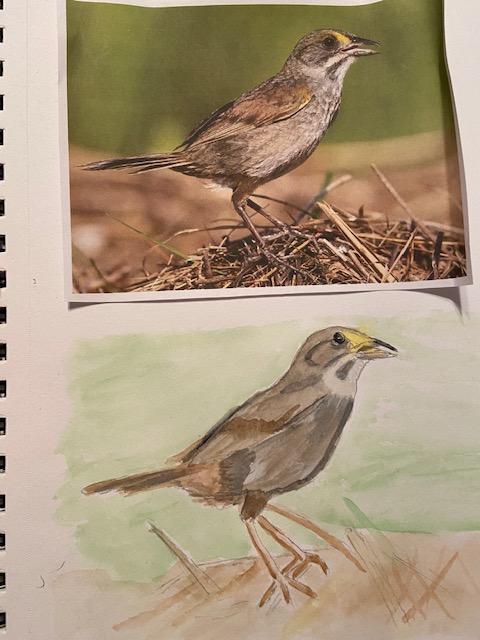
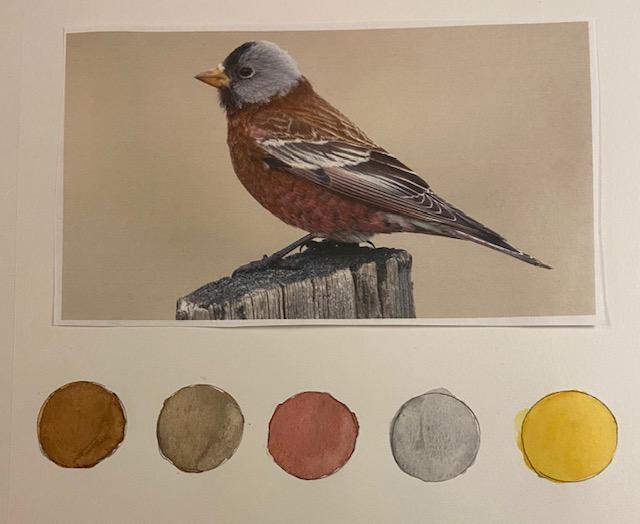
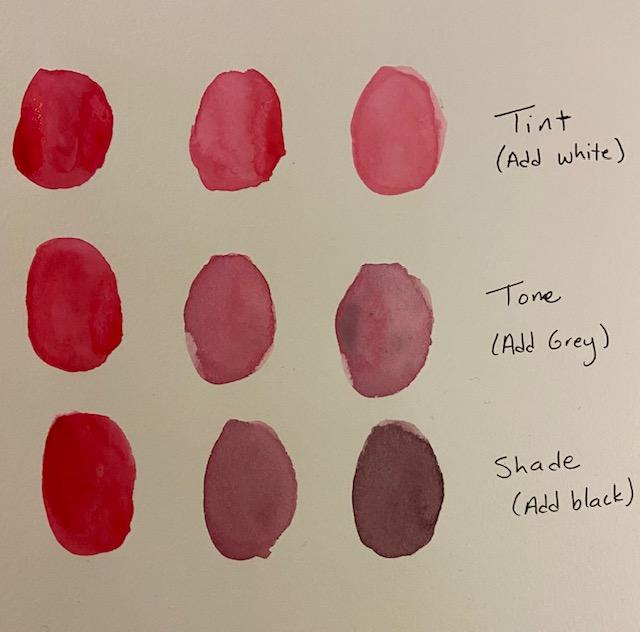
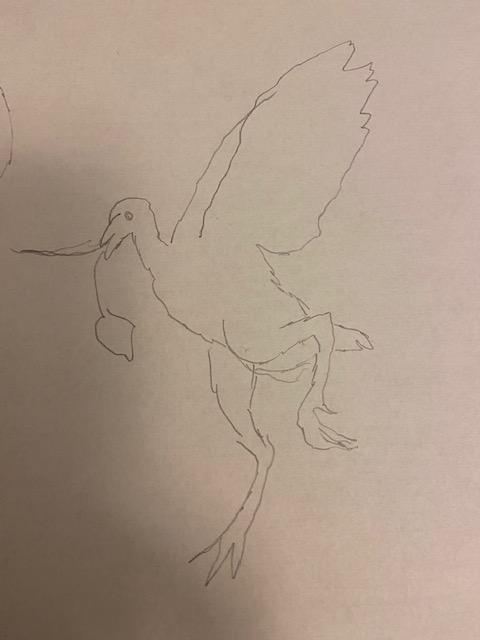
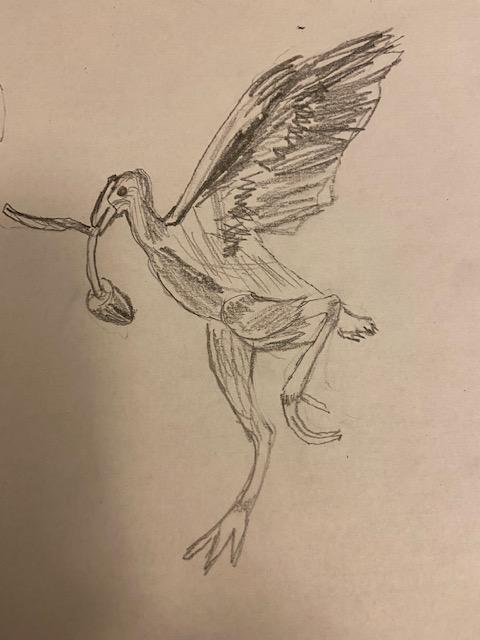
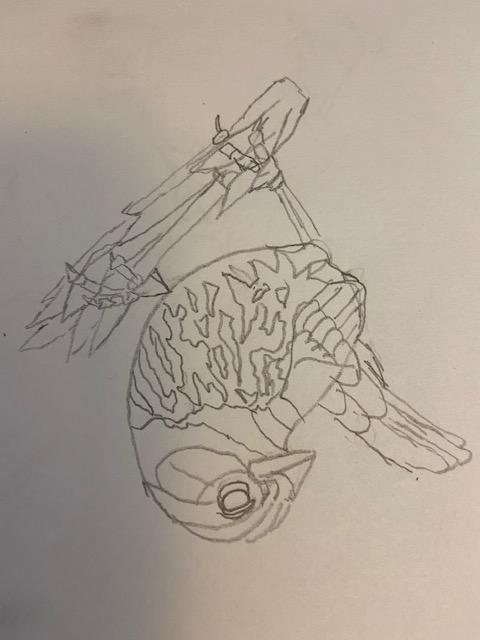
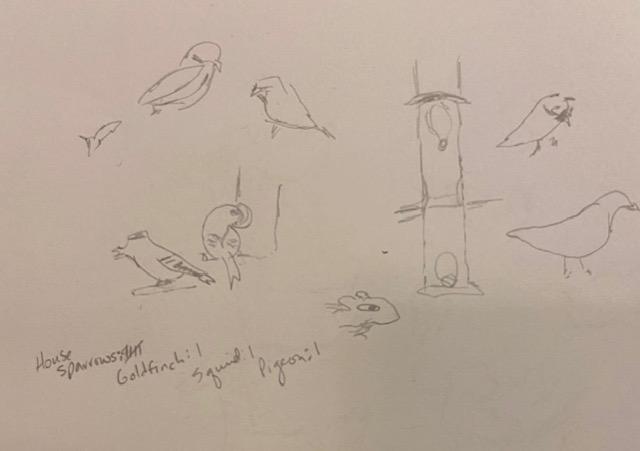
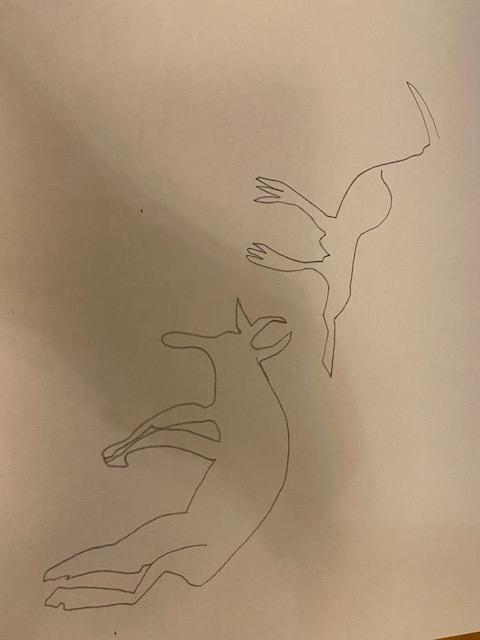
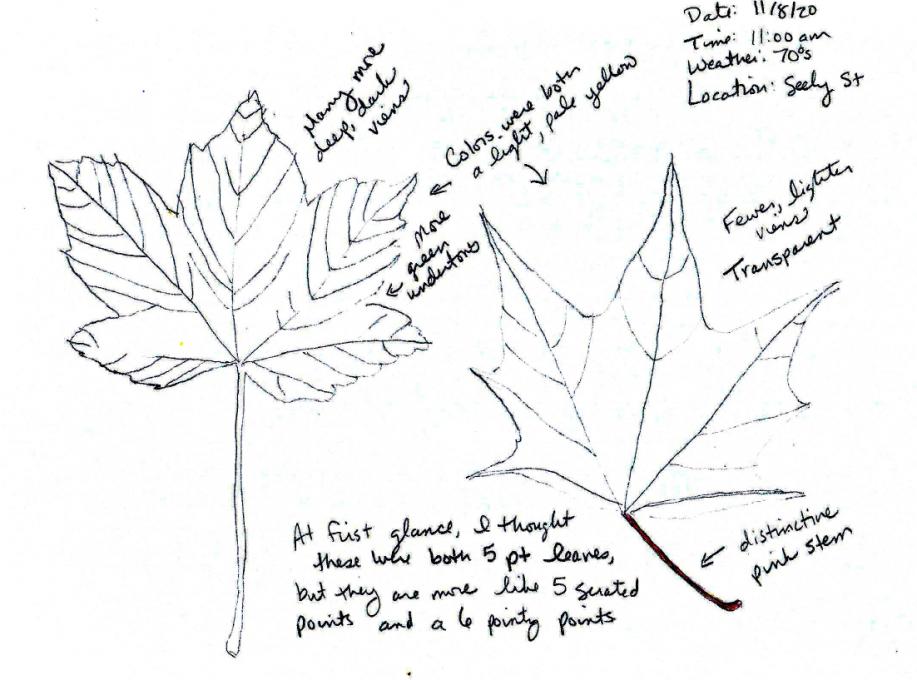 When I first looked at these two leaves they seemed very similar to me, but after drawing and comparing them, I noticed differences in may things, such as the shape of the points and veins. I also noticed many subtle differences in color.
When I first looked at these two leaves they seemed very similar to me, but after drawing and comparing them, I noticed differences in may things, such as the shape of the points and veins. I also noticed many subtle differences in color.